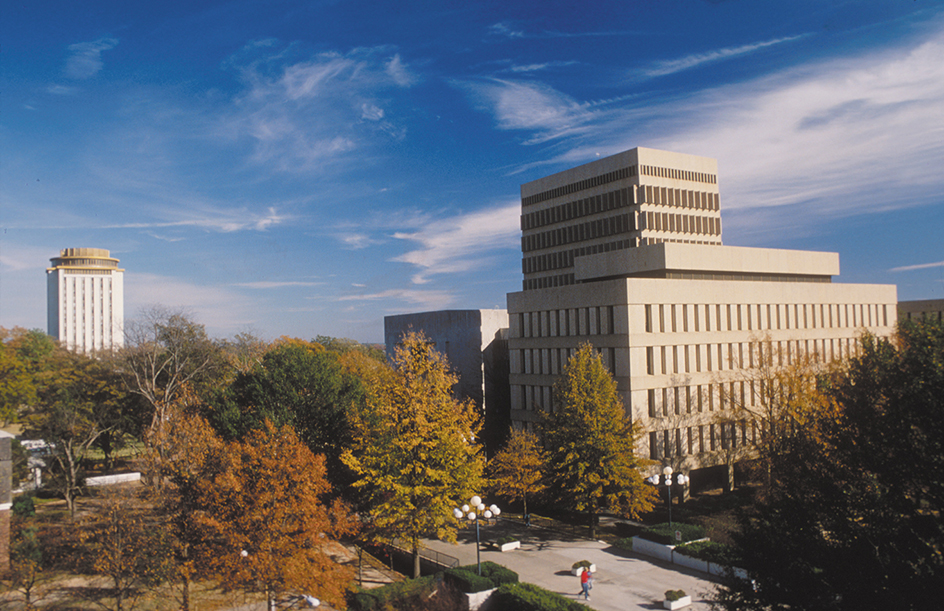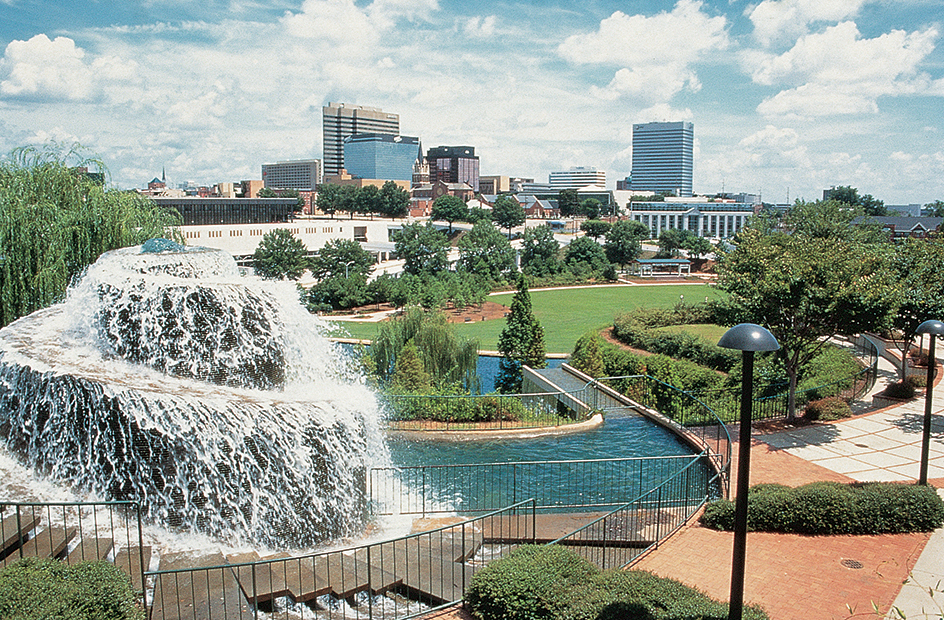Columbia, South Carolina (pop. 136,632; met. area pop. 829,470), is the state’s capital and second largest city. Only Charleston is bigger. Columbia lies on the Congaree River, near the junction of the Broad and Saluda rivers.

Columbia, the seat of Richland County, covers 140 square miles (363 square kilometers). The Columbia metropolitan area covers 3,834 square miles (9,930 square kilometers) and consists of Calhoun, Fairfield, Kershaw, Lexington, Richland, and Saluda counties.
The federal, state, county, and local governments employ many workers in the Columbia area. The city has hundreds of factories. Chief industries include chemicals, concrete products, electronics equipment, lumber, metal products, processed foods, and textiles. The State Farmers Market in Columbia is a leading farm products market of the Southeast.
Historic buildings in Columbia include the First Baptist Church, built in 1859, and the state capitol, called State House. In 1860, the Secession Convention met in the church to discuss the possibility of South Carolina’s leaving the Union. The State House still bears scars from shells fired during the American Civil War (1861-1865).

Other attractions in Columbia include the Governor’s Mansion, the Columbia Museum of Art, the historic Columbia Canal, President Woodrow Wilson’s boyhood home, Riverbanks Zoo and Garden, Riverfront Park, and the South Carolina State Museum. The Town Theatre, established in 1919, is one of the oldest little theaters in the United States. Columbia has a symphony orchestra and is the home of Allen University, Benedict College, Columbia College, the University of South Carolina, and other educational institutions.

Columbia has a council-manager form of government. Six council members and a mayor are elected to four-year terms. The council appoints a city manager to supervise the city’s business.
Congaree Indians lived in what is now the Columbia area until the early 1700’s, then moved north. White settlers built farms and cotton plantations in the area. In 1786, the South Carolina Legislature voted to move the state capital from the coastal city of Charleston to the middle of the state. The legislators called the new capital Columbia, a name poets had used for the country. The Legislature first met there in 1790. In the 1800’s, cotton milling became one of Columbia’s most important industries. Columbia grew until the Civil War began in 1861. It began to grow again by the 1880’s. Many textile mills expanded, and new industries came to the area.
In the late 1960’s, the city began a program to beautify Columbia and encourage more people to make use of the downtown area. Several office buildings were constructed during the 1970’s and 1980’s. In the 1990’s, the city worked to beautify Columbia’s waterfront. New parks and other public improvements attracted businesses and shops to the waterfront area.

